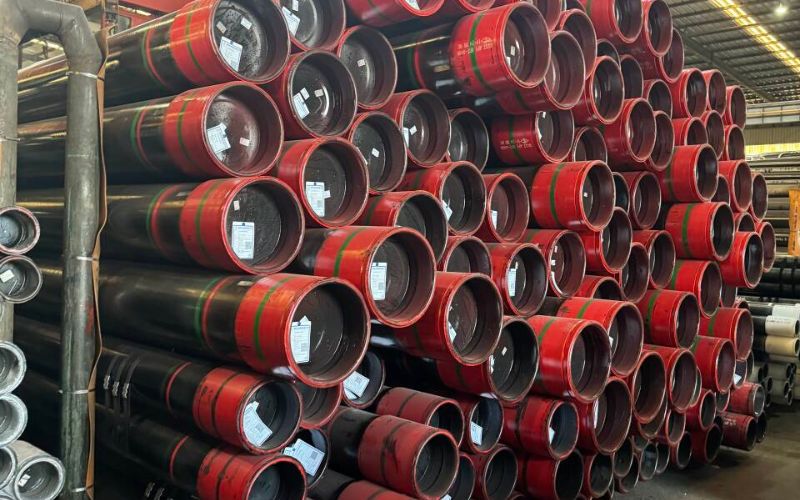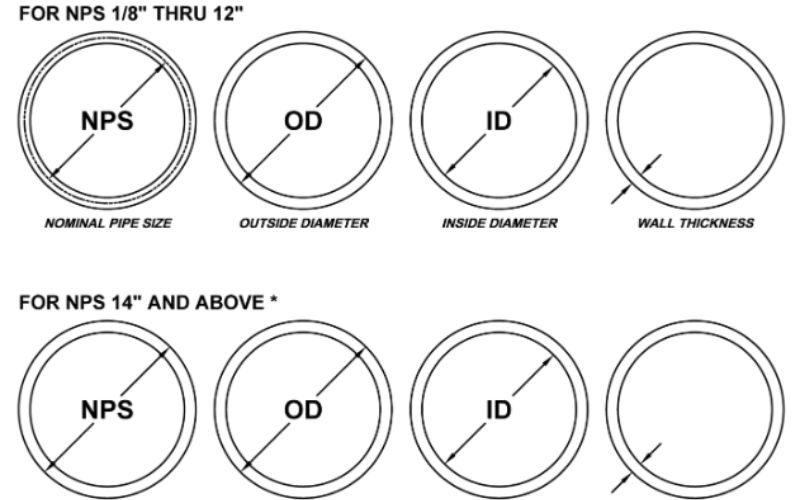Understanding Galvanized Water Pipe: Installation, Maintenance, and Quality Considerations
Galvanized pipes have been etched in record books for being strong, durable, and corrosion-resistant, and have been considered practically the fundamentals of any plumbing system for many years. This quintessential guide will help empower anyone wanting to make an educated decision about the car, or lack thereof, of these infrastructure components while in their home, or a contractor with more expert-like insight.
Introduction to Galvanized Water Pipe
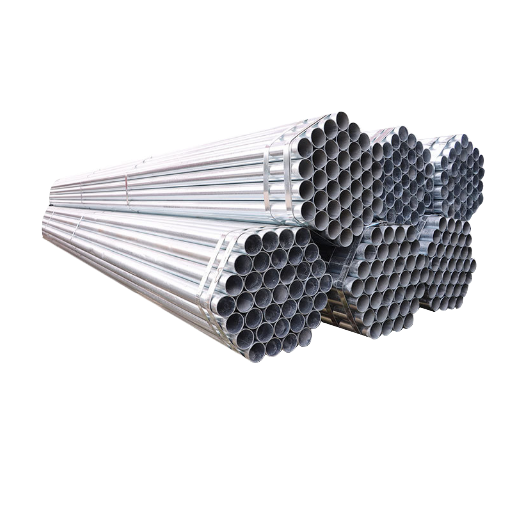
Water pipes are galvanized steel pipes onto which zinc is deposited for protection against corrosion and rust. Through most years of the 20th century, these pipes were mainly used in plumbing systems and were highly regarded for their strength, wear, and resistance. Over time, however, the zinc coating wears off, and thus problems begin to arise, interior rust buildup, lowered water pressure, and possible leakage.
⚠️ Important Note
Once, galvanized pipes were the pipes of choice; now copper or PVC pipes have taken their place due to longer life and reliability. Knowing the condition and age of galvanized pipes could give one ample indications as to whether these pipes should be repaired or replaced.
What is Galvanized Pipe?
Galvanized pipe means steel pipes coated with zinc for protection against corrosion and rust. To prepare the pipes by galvanization, one has to immerse steel pipes in a bath of molten zinc so as to form a strong coat capable of withstanding harsh atmospheric phenomena.
✅ Advantages
- Great strength and durability
- Initial corrosion resistance
- Cost-effective option
❌ Disadvantages
- Zinc coating wears away over time
- Internal rust and scaling
- Reduced water flow efficiency
History and Evolution of Galvanized Water Pipes
Galvanized water pipes came forth in the early 1900s as a means of providing resistance against corrosion in plumbing systems. The pipes were coated with a zinc layer so that the steel would not rust upon coming in contact with moisture. This was originally a step forward from simple steel or iron pipes without any coatings, since it prolonged the life of the plumbing systems.
By the mid-century, however, internal corrosion issues became evident, leaving walls scaled up to a point where water flow was affected, thereby losing efficiency. Such problems gradually led to the decline of their use, as materials like copper and plastic pipes that are more durable and easier to maintain came into wide use.
Installation of Galvanized Water Pipe
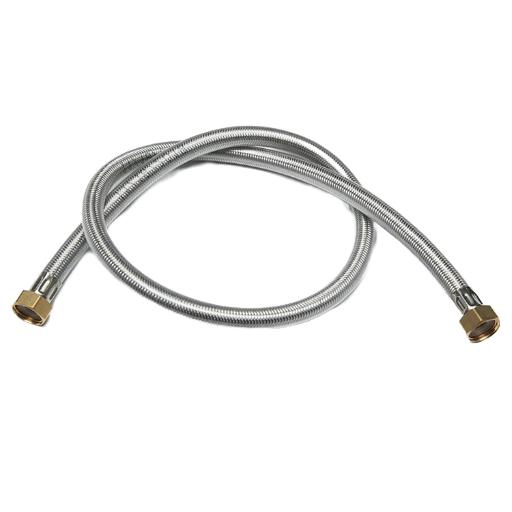
Preparation and Tools Needed for Installation
🔧 Essential Tools Checklist
- ✓ Pipe wrench
- ✓ Hacksaw or pipe cutter
- ✓ Threading tool
- ✓ Teflon tape or pipe sealing compound
- ✓ Adjustable wrench or spanners
- ✓ Safety equipment (gloves, goggles)
- ✓ Measuring tape
- ✓ Level
Preparation Steps
- Verify the pipework layout to make sure all measurements are accurate
- Make sure the pipes and fittings are suitable for the workmanship required
- Shut off the supply and drain any residual water from the system
- Clean and deburr the pipe ends for smoothly fitting joints
Step-by-Step Installation Guide
Water Off!
Locate and shut the main water supply so that water flows no more during installation. Open nearby faucets to relieve any residual pressure within the pipes.
Prepare the Pipes
The pipe ends should be cleaned, leaving no debris, rust, or old sealing material. Resize the pipe for water to fit properly using a pipe cutter if necessary.
Apply the Sealing Material
Apply several layers of Teflon tape around all threaded pipe ends or apply a pipe sealing compound. Read instructions for proper application from the manufacturer.
Attach the Fitting
Attach fittings or components to the prepared pipes and tighten these using an adjustable wrench or spanner. Ensure the fittings are not overtightened and stripped.
Install Any Valves or Fixtures
Lay in place any required valves or fixtures, depending upon the system configuration. Give a thorough double check on the alignments for the best operation.
Start Reconnecting the Water Service Pipe
Slowly open the water drainage valve and watch for any leaks. If any leakage occurs, tighten all the connecting joints further but not to the point of over-tightening.
Test the System
Allow water to flow inside the newly installed system to ensure the water flow and operations are as required. With the pressure applied, thoroughly check each connection for leaks.
Finalize Fine Adjustments
Once the installation has been checked, perform any fine adjustments needed to ensure that it is working efficiently.
Clean Up and Dispose of Wastes
Dispose of the remaining materials safely, which can include old pipe segments or sealing material. Then, clean the area to isolate a safe working environment and a professional finish.
Common Fittings and Connections for Galvanized Pipe
Maintenance of Galvanized Water Pipes
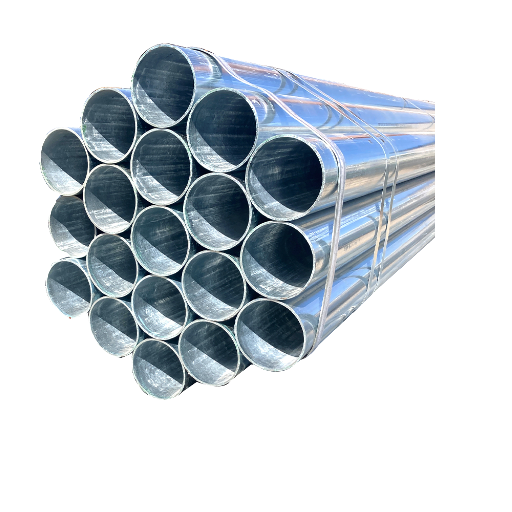
Signs of Wear and Tear in Galvanized Plumbing
🔴 Rust and Corrosion
The appearance of reddish-brown rust or thinning of the metal surface affects the pipe’s durability to a great extent.
📉 Low Water Pressure
A sudden drop in water pressure could be due to internal corrosion, which in turn reduces the pipe diameter.
💧 Water Discoloration
Rust or brown color usually means iron deposits from corrosion in pipes.
💦 Leakages and Stains
Visible leakage or water stains around the pipes may indicate weak areas resulting from wear and tear.
⚠️ Cracks or Bulges
Visible structural deterioration that could
Cleaning and Maintenance Tips
💡 Maintenance Best Practices
- ✓ Regular Pipe Flush
Periodic flushing of the system for sediment buildup and to maintain water flow efficiency. - ✓ Checking Connections
Check the pipe joints and connections for any looseness or wear to avoid leakage. - ✓ Using Suitable Cleaning Agents
Use cleaning agents specially formulated for corrosion control in plumbing systems. - ✓ Monitor Water Pressure
The water pressure should always be maintained at recommended levels to minimize stress on the pipes.
- ✓ Arrange for Professional Inspection
Make arrangements to have periodic inspections of the practitioners’ licenses. - ✓ Water Filter Installation
Install a filter system to keep out debris, minerals, and contaminants from the piping. - ✓ Keep Away from Cold Weather
Insulate during the winter months to prevent freezing and bursting. - ✓ epair When Possible
Catch minor damages such as tiny leaks before they escalate into larger problems.
When to Replace Galvanized Pipes
⏰ Replacement Timeline
Galvanized piping should be replaced if the pipes exhibit clear signs of deterioration: rust visible, leaking, or very low water pressure caused by internal corrosion. Typically, houses with aging plumbing installations (older than about 40-50 years) should consider replacement as a precaution against possible failure in the days ahead.
Key Replacement Indicators:
- Water quality shows an abnormal amount of contaminants, such as lead
- Pipes are 40-50+ years old
- Frequent leaks and repairs are needed
- Significant reduction in water pressure
- Visible rust or structural damage
Water Quality and Health Concerns
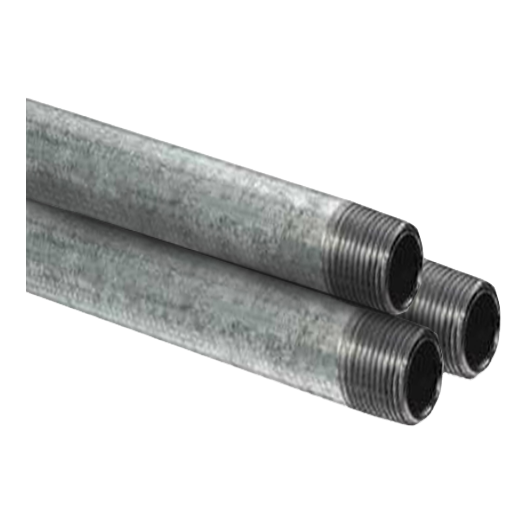
Understanding Lead Contamination Risks
Lead contamination in water occurs when materials containing lead used in plumbing corrode, generally due to water being too acidic or soft. Primary sources of lead contamination are lead-containing pipes, faucets, or fixtures. Lead dissolution in water could pose health complications depending on the exposure.
🚨 High-Risk Groups
Lead affects brain development, the nervous system, and kidney function. Children and pregnant women are mostly at risk. Testing water for lead could minimize the risk.
Solutions for Lead Contamination:
- Replace plumbing materials containing lead
- Install water treatment systems certified for lead removal
- Regular water testing
- Professional plumbing assessment
Impact of Aging Pipes on Water Quality
Aging pipelines pose a severe threat to water quality through corrosion, material alteration, and the leaching of lead through the pipes into the water supply. Corrosion within old pipes, especially those made of lead, galvanized steel, or iron, leads to contamination of drinking water with lead or rusty matter, leading to health hazards, as well as taste, color, and odor issues.
📊 Key Statistics
A water infrastructure study found that 15-22 million Americans are exposed to lead through their plumbing systems, which only accentuates the need for immediate attention on aging infrastructure. Corroded pipe systems contribute to fostering conditions amenable to biofilms and bacteria, which is detrimental to water safety.
Risk Reduction Strategies:
- Thorough inspections and pipe replacements using newer materials like copper or PEX
- Maintaining proper pH in the water supply
- Regular water quality testing
- Installation of appropriate filtration systems
Testing Water Quality in Older Homes
Checking the water quality in older homes usually entails testing for common contaminants such as lead, copper, and bacteria that could arise from aging plumbing systems in the house. Homeowners should thus use certified water testing kits or hire professional water testing agencies for reliable results.
🧪 Water Testing Best Practices
Sample Collection
Collect samples from multiple faucets throughout the house to check the entire system.
Professional Testing
Use certified water testing kits or hire professional water testing agencies for accurate results.
Regular Monitoring
Test water quality periodically to maintain consistent safety standards.
Action Plan
Implement filtering, pipe flushing, or plumbing replacement based on test results.
Comparisons with Other Pipe Types
Galvanized Pipe vs. PVC and Copper Pipes
Pros and Cons of Using Schedule 40 Pipe
✅ Pros
- Strength: Withstands pressures up to medium and is corrosion-resistant.
- Price: Cheaper than Schedule 80 and above.
- Installation: Easy to install since it is lightweight to cut.
- Use: Plumbing, irrigation, and drainage are usually done with it.
❌ Cons
- Pressure: It cannot handle high-pressure applications.
- Temperature: It will bend under high temperature or it will degrade.
- Impact Resistance: It is not enough to resist physical damage.
- Environmental Limitations: Under hard environmental conditions, it may cause cracking.
Why Choose Galvanized Water Pipe Over Alternatives?
These water pipes, because of their superb durability and resistance to corrosion, were suitable for water systems that were designed for long-term use. The zinc coating prevents rust and, hence, increases pipe life, especially when used outdoors or when in direct contact with the soil.
Key Advantages:
- Can resist high pressures and external impacts due to structural strength
- Suitable for heavy-duty environments
- Initial higher cost offset by long life expectancy
- Performance against other, less durable choices
Common Issues with Galvanized Water Pipes
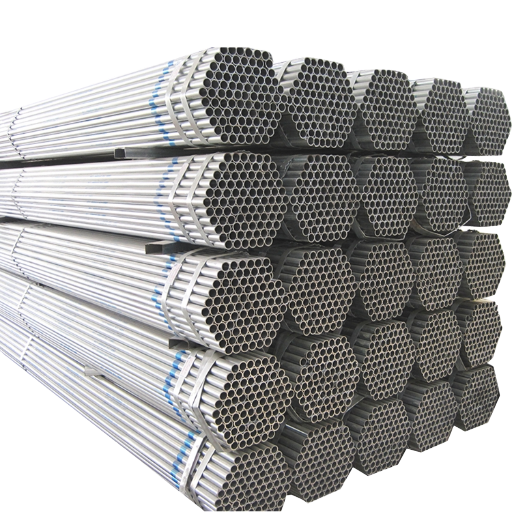
Corrosion and Rust Problems
Corrosion and rust of the internal part of galvanized water pipes develop with time. When the zinc coating on the pipe is worn down, rusting takes place as the exposed steel remains in contact with water and oxygen. The flow of water is restricted while the quality is lowered, further weakening the pipe structure.
⚠️ Common Signs
Such problems are common with older installations where protective coatings have worn off. Regular inspections and early replacements may keep these pipes from leaking, contaminating water, and failing.
Clogs and Reduced Water Flow
They are known as clogs because they are associated with dirt-and-detritus fare that includes grease, hair, soap residue, and mineral deposits; during their formation, they obstruct water flow, making drains sluggish.
Prevention Strategies:
- Keep hair away from drains
- Avoid the disposal of grease and irritants
- Regular maintenance and cleaning
- Professional inspection for persistent issues
Solutions for Common Galvanized Pipe Issues
Conclusion and Call to Action
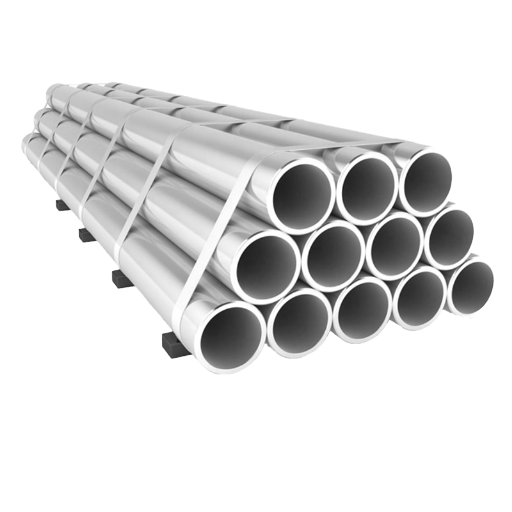
Recap of Key Points
A systematic approach must be followed if the galvanized pipe issues are to be addressed for long-term effectiveness. A regular inspection has to check for rusting, leakage, or early contamination. There will be preventive measures that one could apply to the pipes, as for the rating, an epoxy or a polyurethane coating could be used. Sacrificial anodes may be added as cathodic protection to extend the pipe life.
Testing of water quality will reveal what contaminants are present. When replacement is the last option, older galvanized pipes might be replaced with newer materials such as PEX or copper. One should call a professional for more complex repairs or replacements to ensure safety and durability.
Encouraging Professional Consultation for Installation and Maintenance
The installation of wastewater systems needs to be carried out by accredited practitioners to ensure they function correctly and remain reliable over time. Certified plumbers are trained and competent to detect issues at an early stage, recommend the appropriate materials, and work to codes and standards.
💡 Professional Benefits
Periodic inspection by certified professionals can prevent problems from hiding within, reduce costs of repairs, and keep an installation efficient. By engaging reputable professionals, homeowners and business entities stand to enjoy the benefit of safer and more durable plumbing.
Frequently Asked Questions (FAQs)
Reference Sources
1. Utility Considerations in Developing an Action Plan for Galvanized Iron Water Pipe Management
- Authors: M. Edwards et al.
- Journal: AWWA Water Science provides valuable insights into corrosion control in plumbing systems.
- Publication Date: July 1, 2023
- Citation: (Edwards et al., 2023)
- Summary:
This study brings into focus management concerns for GIP in drinking water systems, sometimes being at the root of problems like discoloration of water, corrosion, and possible lead release. The authors offered in this study a management framework that was gleaned from literature and case studies—a perspective to help the utilities grasp the issues associated with GIP and how to treat them. The framework rests on consumer expectations, controls to prevent corrosion, variable performance, and cost-benefit analysis relative to corrective actions.
2. Stability of arsenic(Ⅲ, Ⅴ) coexisting with colloidal polystyrene microplastics in pipes that have been dipped in galvanized steel pipe scales under drinking-water conditions.
- Authors: Zhu Peng et al.
- Journal: Chemosphere
- Publication Date: April 1, 2023
- Citation: (Peng et al., 2023, p. 138762)
- Summary:
This research investigates the stability of arsenic species with corrosion scales in galvanized steel pipes while exposed to colloidal microplastics. In their study, arsenic in drinking water distribution systems is subjected to migration and transformation behaviors through speciation simulation and sequential extraction methods. According to key findings, microplastics will increase the stability of arsenic and thus fewer arsenic species get released into the drinking water.



